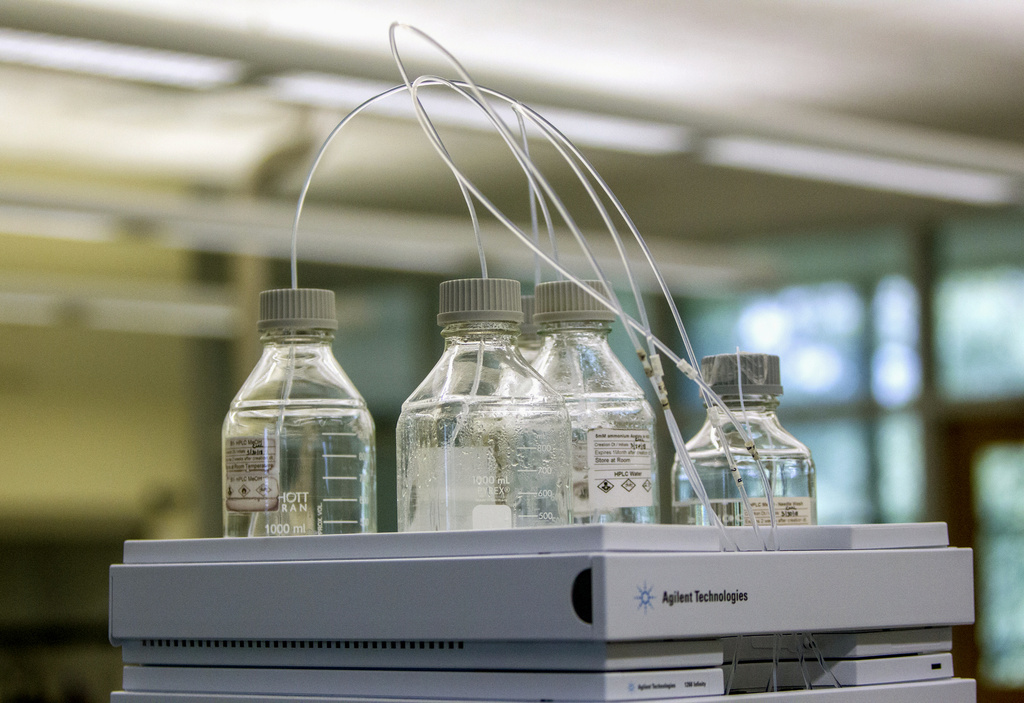Clark Public Utilities found trace amounts of per- and polyfluoroalkyl substances, commonly dubbed “forever chemicals,” in an offline water well.
Test results the utility received in March revealed that its Well 22, located in southwest Clark County, contained perfluorooctanoic acid, or PFOA, at 8 parts per trillion.
This substance is one of five types of “forever chemicals,” generally known as PFAS, that the state regulates. Washington’s drinking water levels, adopted in 2021, recommends how much water a user can consume over a lifetime without suffering adverse health effects, even those in sensitive groups.
Well 22’s levels are below the Washington State Department of Health’s action level of 10 parts per trillion for PFOA. To illustrate, one part per trillion is equal to a drop of water in 20 Olympic-sized swimming pools.
“Even at these extremely low levels, the detection at this well was very surprising,” said Clark Public Utilities spokesperson Dameon Pesanti. “It’s in a residential neighborhood of older homes, without any obvious sources of contamination. All other nearby wells tested negative.”
Well 22 has been offline since September 2022 and was used during periods of high demand, accounting for less than 1 percent of the utility’s total water supply, he said. The utility plans on adding a treatment system in its future capital budgets, as well as developing a request for assistance on mitigating PFAS.
Commonly detected PFASs include PFOA and perfluorooctane sulfonic acid, or PFOS. They are two of five state-regulated compounds, which have been removed from most products due to health and environmental risks, according to the Environmental Protection Agency.
The utility has tested 26 of 28 wells in its main system, as well as one of 22 satellite wells in rural areas that are separate from its core supply. Pesanti said the utility is aiming to have all wells tested by the end of the year.
PFAS are found in everyday items that are resistant to heat, water, stains and oil, making them useful for manufacturers who sell nonstick pans, food wrappers, outdoor gear, cleaning supplies and cosmetics.
The Centers for Disease Control and Prevention reports that health conditions associated with PFAS exposure include elevated cholesterol levels and blood pressure, impaired immunity and increased risks of thyroid disease and testicular and kidney cancer.
In March, the EPA proposed a federal PFAS drinking water limit, 4 parts per trillion, which is lower than Washington’s current action levels. If passed, water management agencies will be required to install treatment systems at affected areas regardless of whether it’s below the state threshold, including Clark Public Utilities’ contaminated well.
Clark Public Utilities has regularly tested its water since 2014, corresponding with state and federal regulations. In 2021, the utility began using more advanced technology that could uncover PFAS levels down to 2 parts per trillion, a more precise measurement than they could previously detect.
The utility joined a growing list of water management agencies that have detected PFAS in its system.
In April, the city of Vancouver found three of its nine well fields — Water Stations 4, 14 and 15 — exceeded state levels for the substances, locations of which are distanced from one another. Farther east, the city of Camas detected elevated levels of PFAS in a well close to its downtown core.
Some Washington utilities with contaminated water posit that the chemicals came from military bases, airports or sites that hosted trainings with firefighting foam. Local agencies, however, say they haven’t determined a potential source.
“We’re still just trying to wrap our heads around where we fit in with all of this,” Pesanti said.




